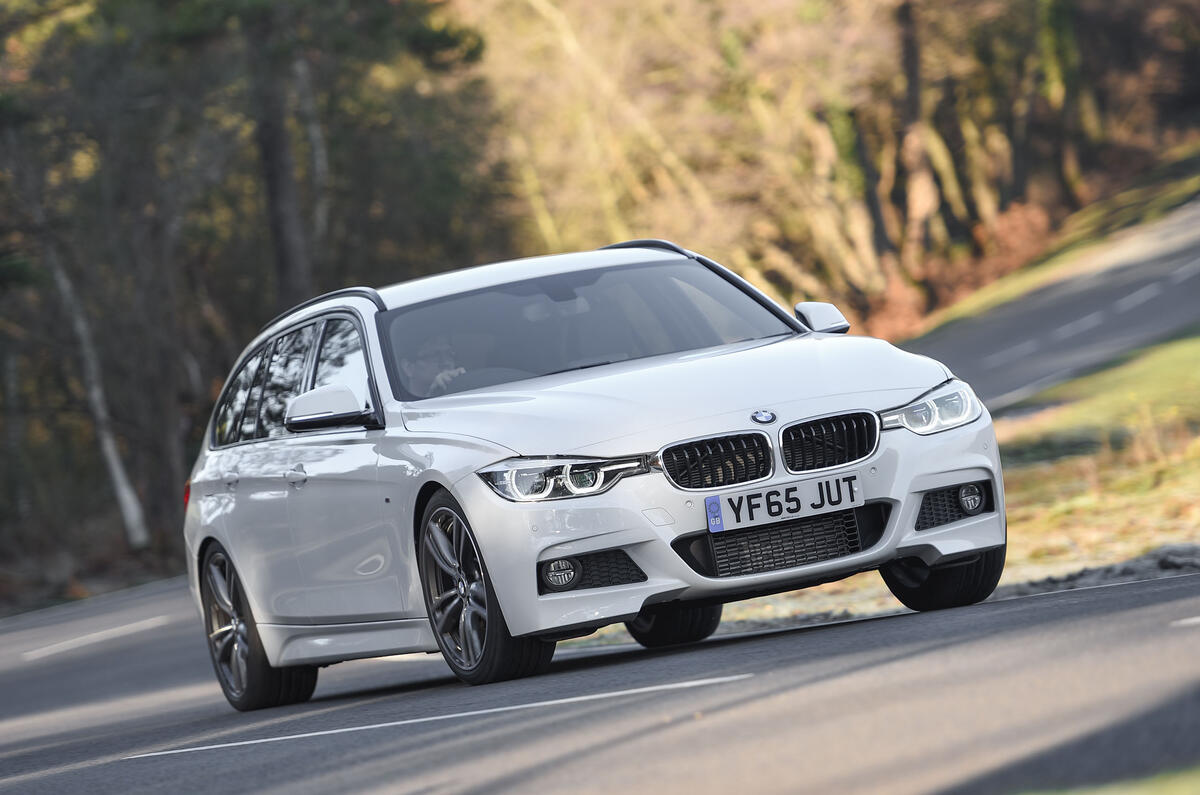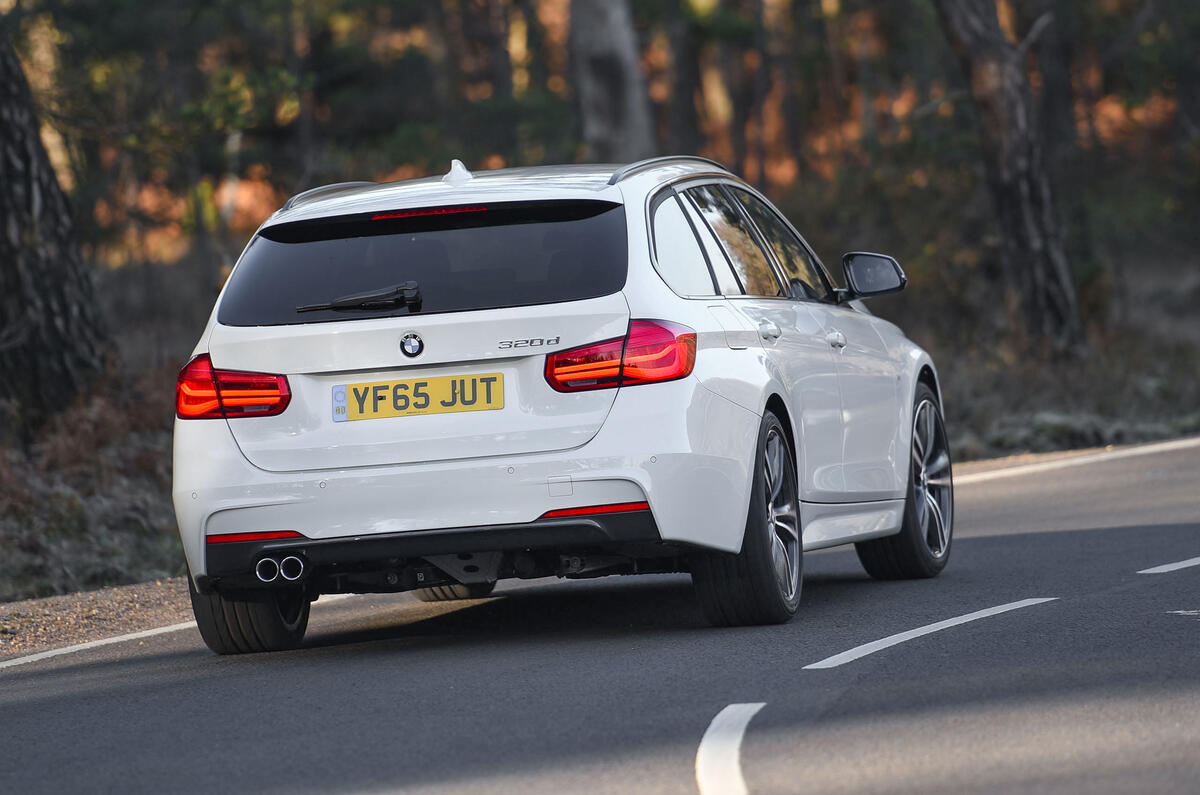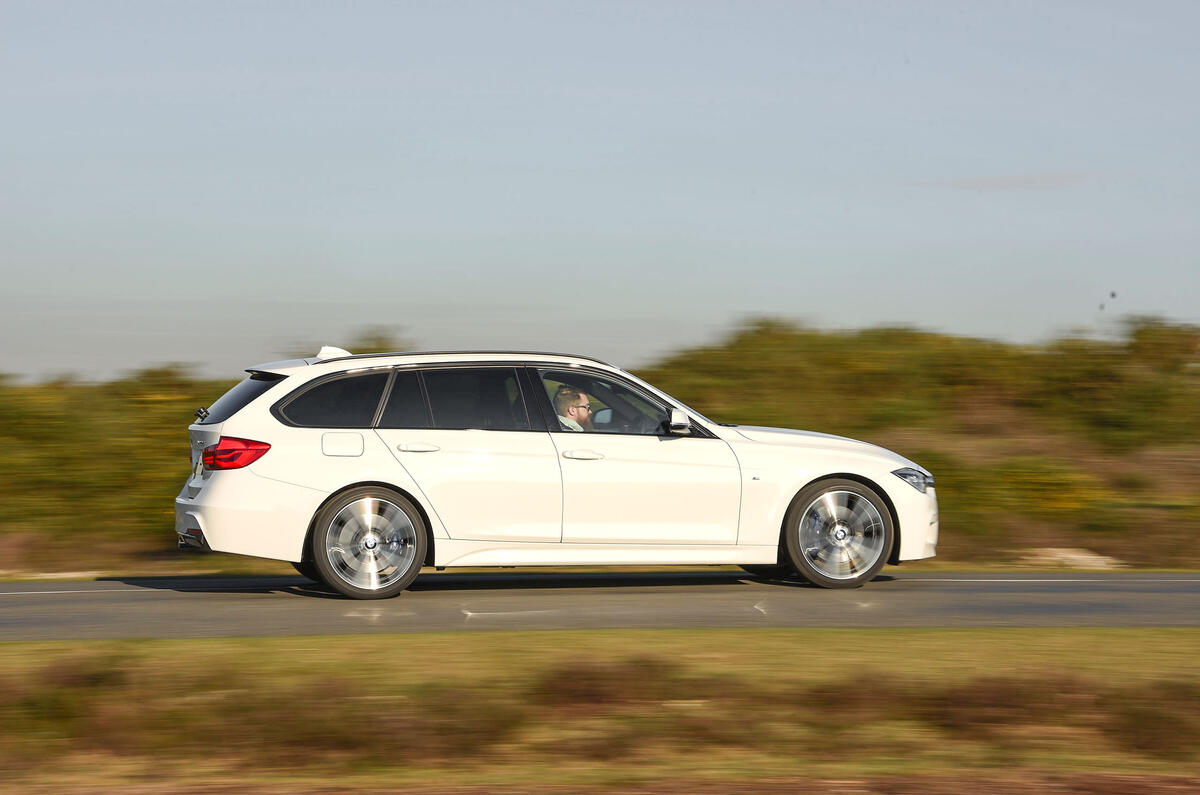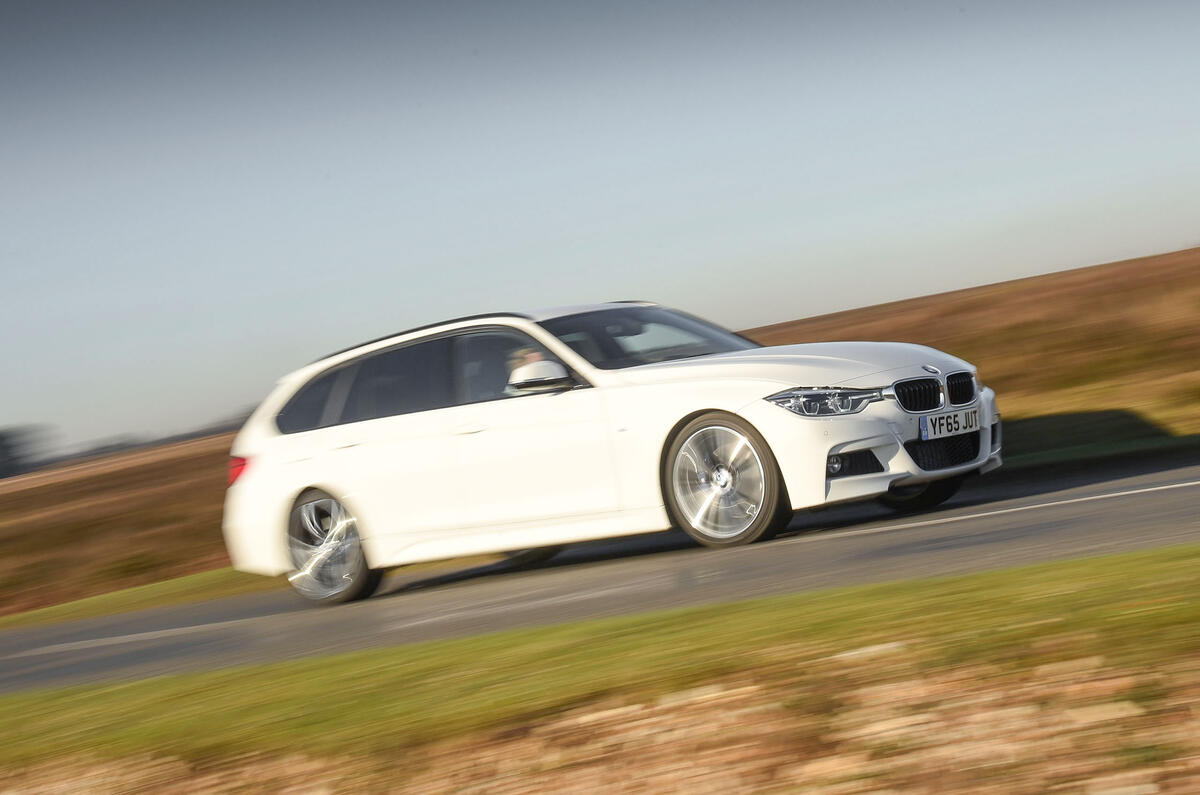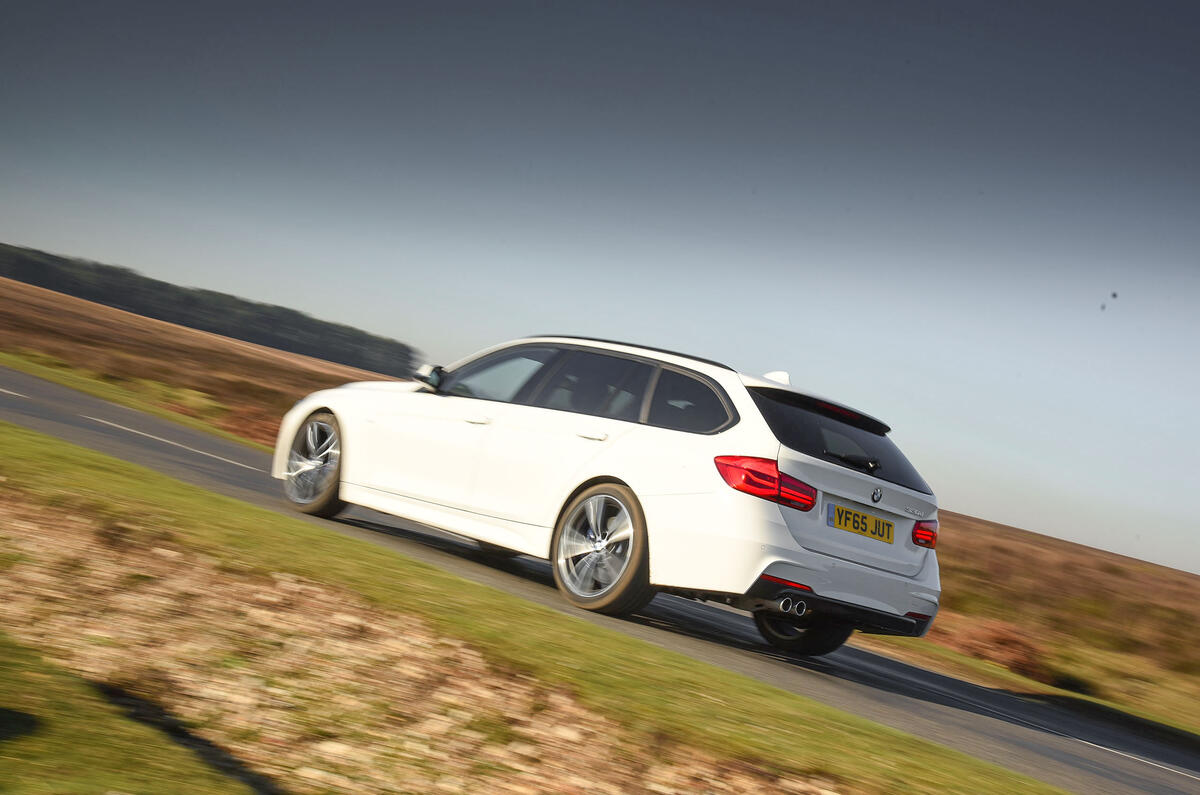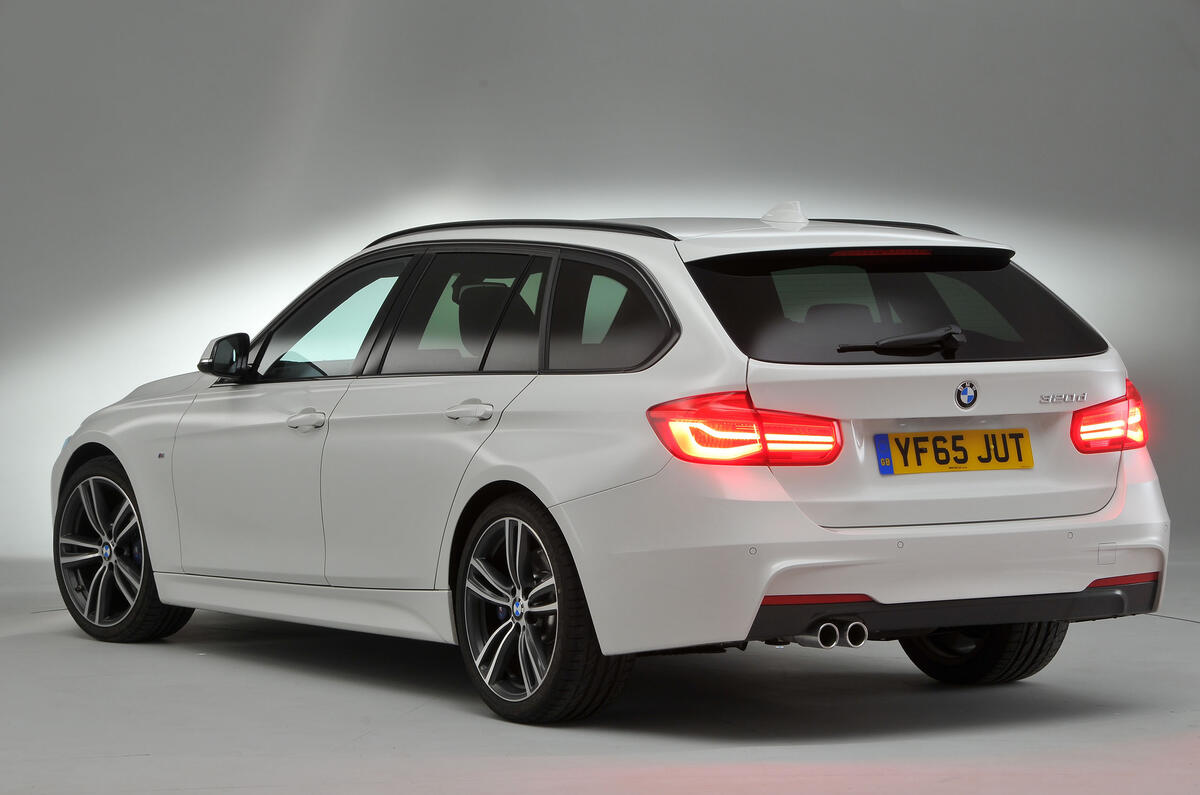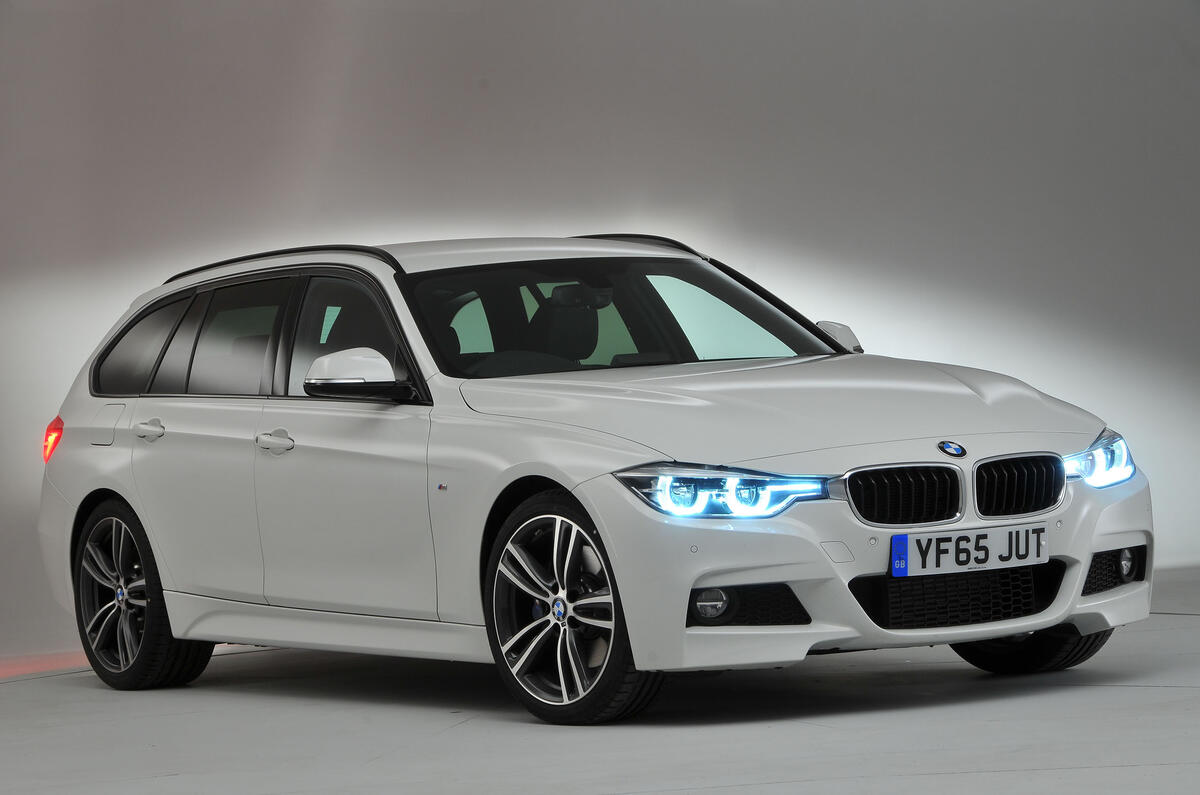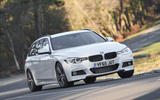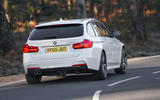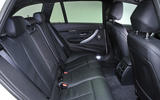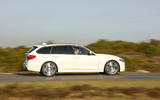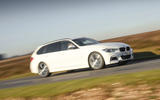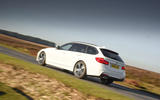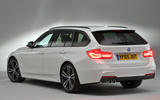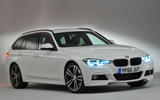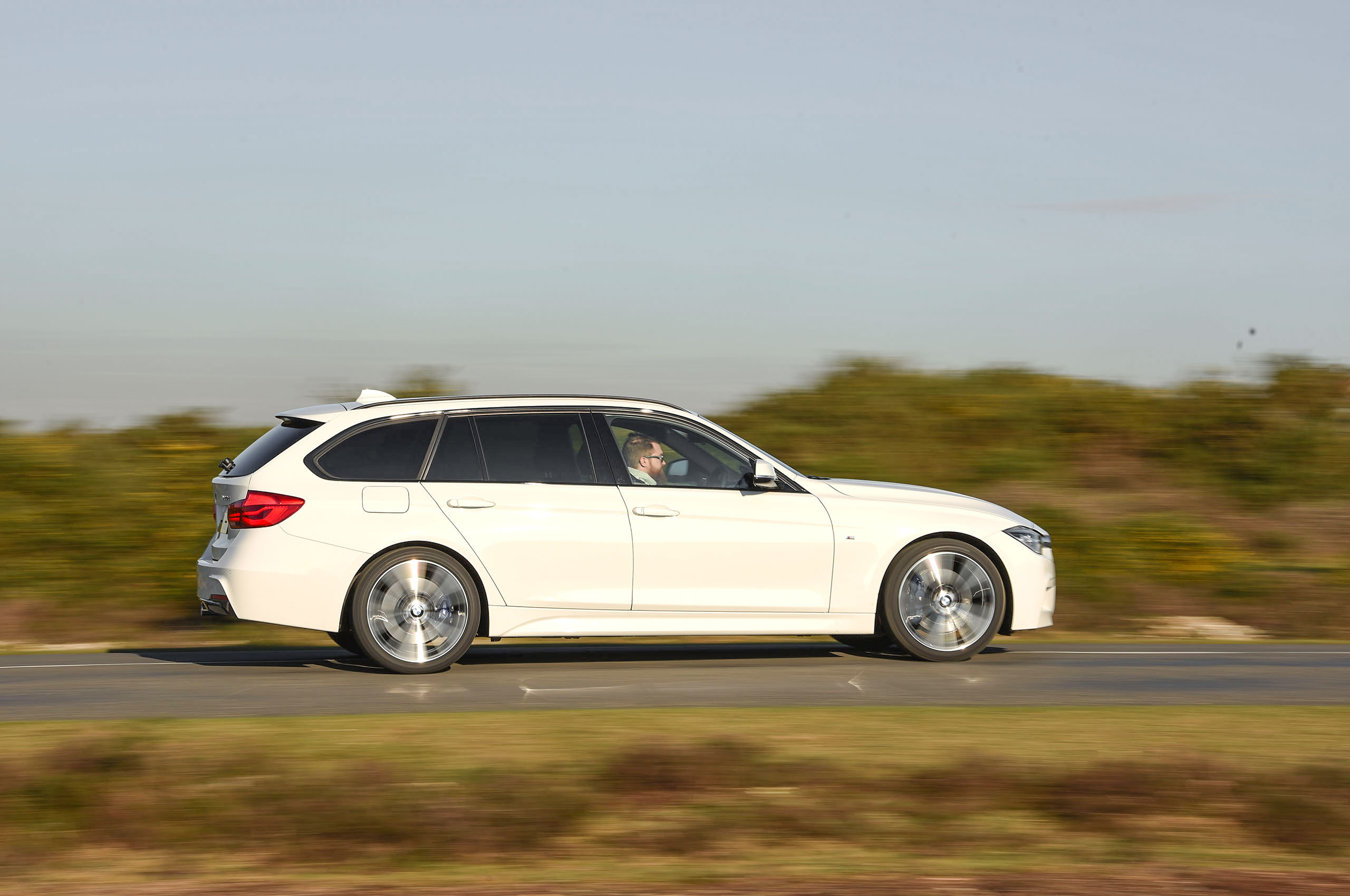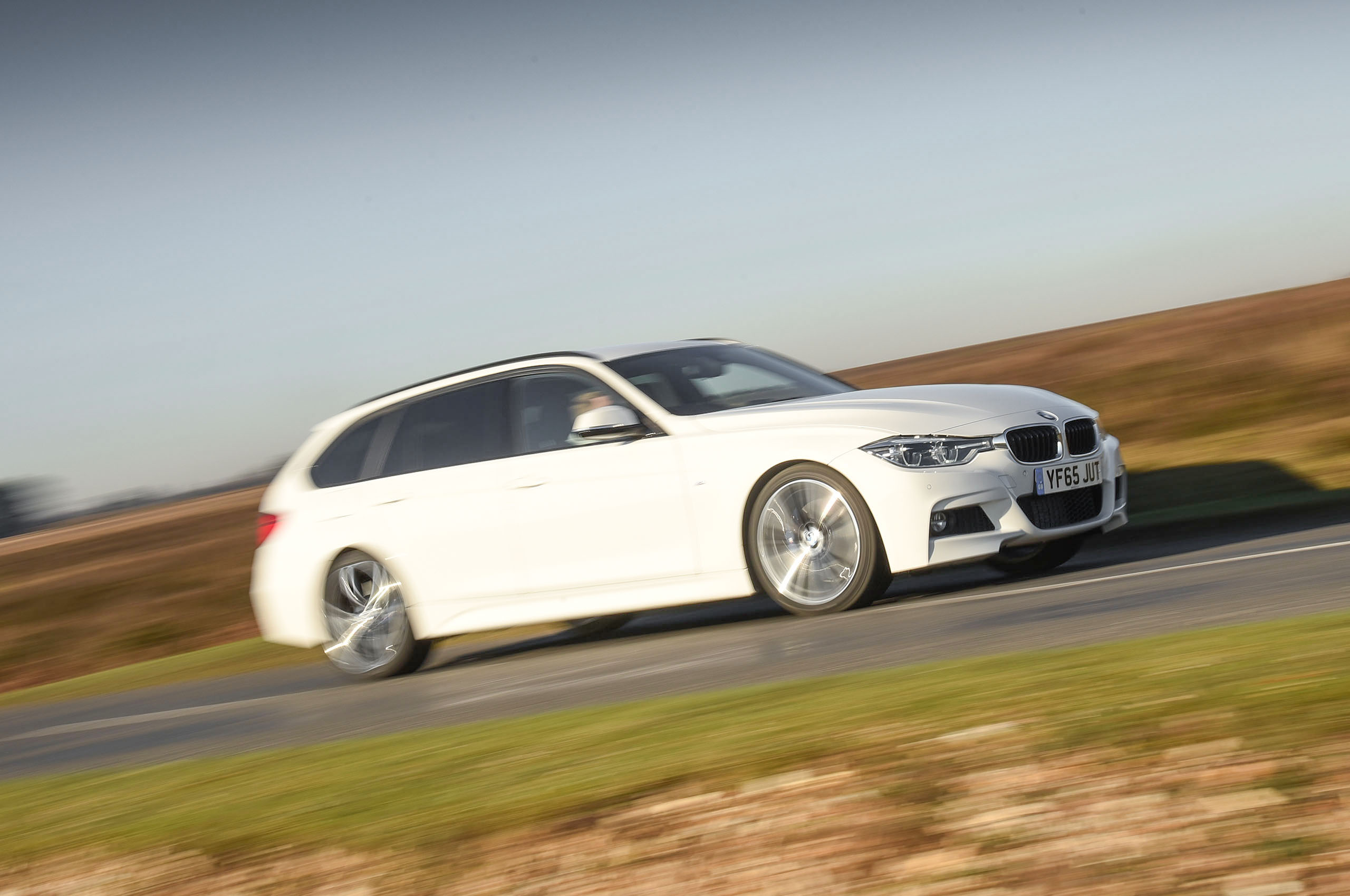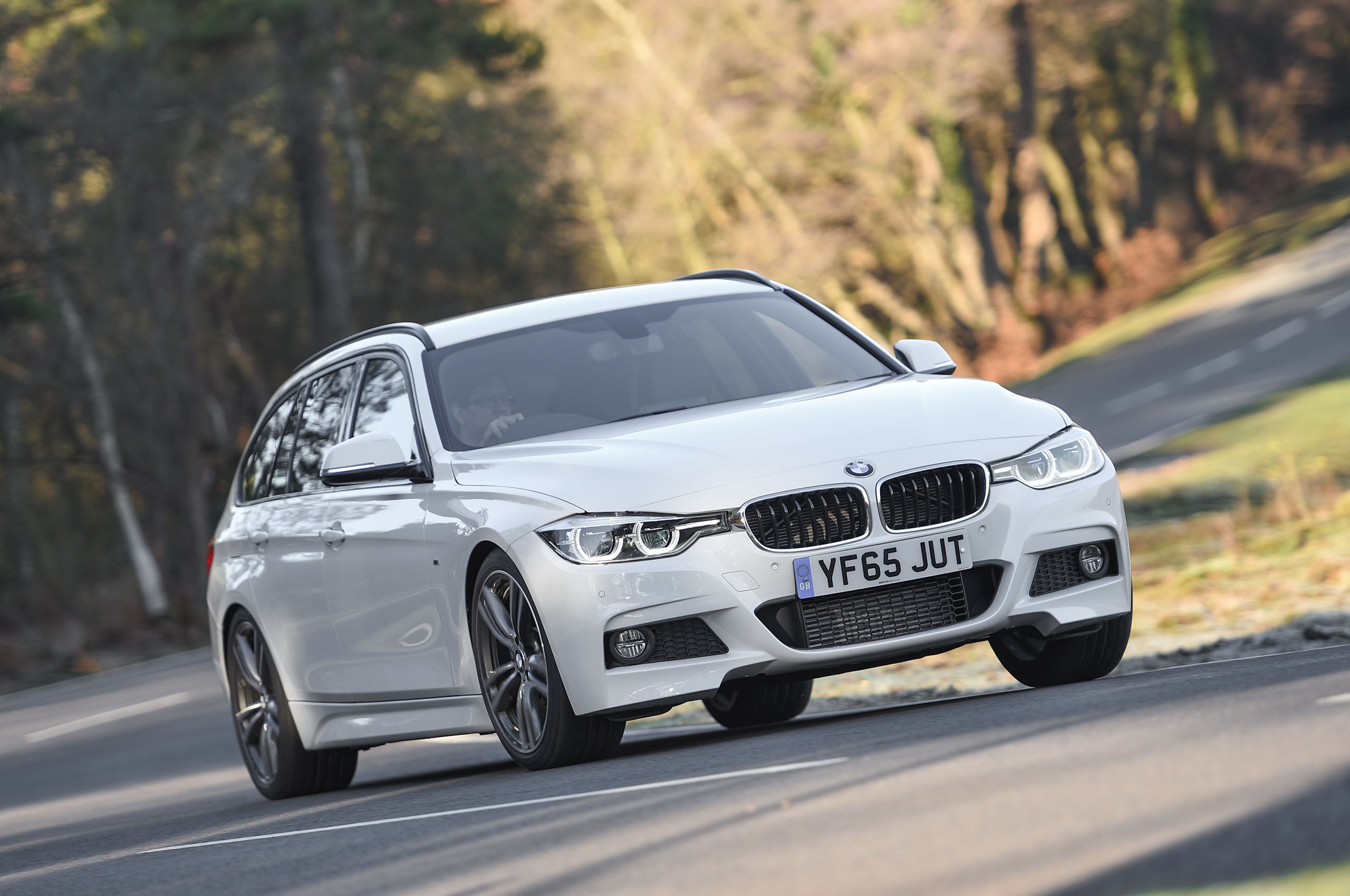BMW’s 3 Series Touring has been a front-runner in the executive estate car class for 40 years now, having been progressively improved across seven generations.
You could spend a good chunk of cash on a nearly new ‘G81’ example, but why not save yourself around £10,000 by buying an older ‘F31’ that’s very nearly as talented?
Launched in 2012, this particular 3 Series immediately outclassed many desirable alternatives like the Audi A4 Avant and Mercedes-Benz C-Class for comfort, refinement, equipment and space – but what really set it apart was its chassis tuning and suspension, which
made the car as rewarding and engaging to drive as the saloon.
“The handling is agile and sure-footed,” we said when we first drove it, “and it has just the right amount of roll, pitch and dive to remind you that you’re testing the chassis.”
If you can, spring for a 3 Series fitted with adaptive dampers: they allow you to adjust the firmness of the suspension and can turn the car from genuine performance estate to comfortable cruiser at the touch of a button. And if you want even more grip, and greater usability in wintry conditions, then opt for a four-wheel-drive xDrive car.
There’s a broad and brilliant range of models to choose from. The clear standout is the 320d, with a 184bhp four-cylinder diesel engine that’s smooth and will return 42mpg day to day or an impressive 56mpg on longer journeys.



